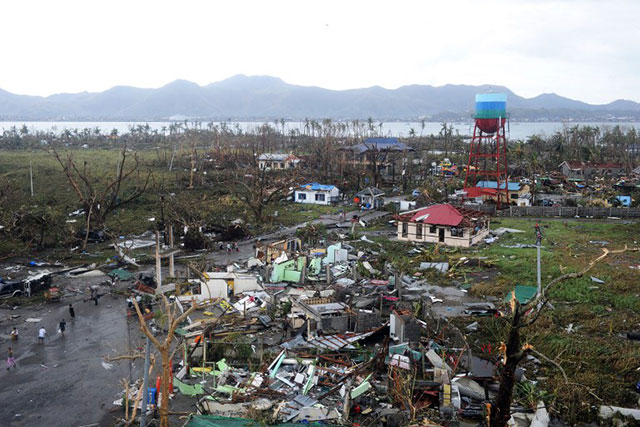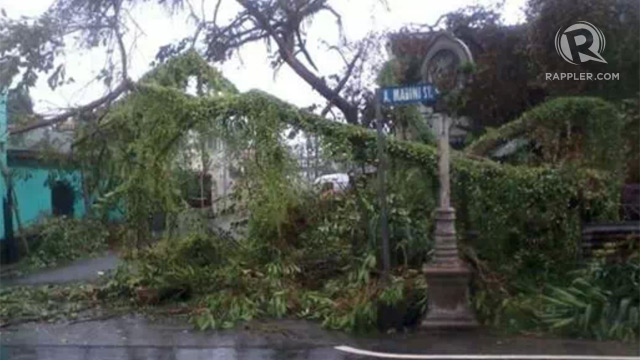SUMMARY
This is AI generated summarization, which may have errors. For context, always refer to the full article.

MANILA, Philippines – In Ormoc City’s Regional Trial Court building, Belenda Montebon, along with other evacuees, waits for much-needed help to arrive.
Outsiders have yet to enter the city, said Montebon.
There is no potable water, food, or electricity. “Naghihintay pa lang kami ng tulong if ever may darating na relief goods po,” Montebon told Rappler. (We’re waiting for help to arrive, if relief goods reach us.)
Cellphone signal comes and goes and with power still down, communication gadgets are running dangerously low on battery.
The 62-year-old could barely express what the devastating storm was like. “Sobrang takot kami, hindi ko mae-explain. Nagtatakbuhan mga tao kasi may mga nagco-collapse na building at walang kuryente,” she added. (We were very scared, I couldn’t explain it. People were running around because buildings were about to collapse and there was no electricity.)
Jed Cortes drove to Ormoc by motorcycle to check on people he knew. He described what he saw – “It looks like a wasteland here with crumpled houses and trees down.”

Full-capacity hospitals
Journalists in Tacloban City, meanwhile, said flood waters reached the 2nd floor of the 2-story Oriental Hotel Friday morning.
On Saturday, November 9, the full damage to the Leyte capital became more apparent. Officials reported at least 100 dead in Tacloban, and journalists on the ground have seen “a lot of wounded.” The number of dead is expected to rise as communication lines are restored.
Hospitals in Tacloban are at full capacity and are unable to treat the wounded.
As access to the city is still difficult, water supplies are running low. “There’s looting everywhere,” one witness said.
Yolanda is tagged as one the strongest storms ever recorded. Foreign meteorologists say Yolanda made landfall with winds of up to 315 kilometers per hour. State weather bureau PAGASA reported maximum sustained winds of 235 km/h and gusts of up to km/h.
Montebon said Typhoon Yolanda is the worst storm she’s seen. “Ngayon ko lang na-experience ito. Pinakamalapit na yung November 1990, bagyong Ruping,” she said. (I’ve never experienced this in my life. The closest would be Typhoon Ruping in 1990.)
Ruping, which hit the same region in 1990, left 508 people dead and over a thousand injured. – with reports from Raisa Serafica and Bea Cupin/Rappler.com
Get the latest info on the status of areas affected by typhoon Yolanda (international codename: Haiyan).
Help the victims of Yolanda. Visit Rappler’s list of ongoing relief operations in your area. Tell us about your relief and recovery initiatives, email move.ph@rappler.com or tweet us @moveph.
Visit rappler.com/typhoon-yolanda for the latest updates on Typhoon Yolanda.
More from our coverage:
- #ReliefPH: Victims of Typhoon Yolanda need your help
- Iloilo under state of calamity
- President’s ‘pork,’ savings to fund Yolanda relief efforts
- Tacloban hospital faces medicine shortage
- Land route from Manila to Tacloban now passable – Roxas
- Worried Pinoys use social media to find loved ones
- Tacloban Diary: I saw death, I fear anarchy
- TIMELINE: Super Typhoon Yolanda
- WRAP: Hundreds feared dead as Yolanda exits PH
Add a comment
How does this make you feel?
There are no comments yet. Add your comment to start the conversation.